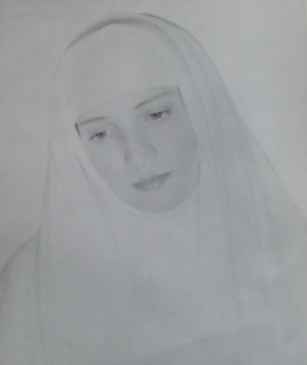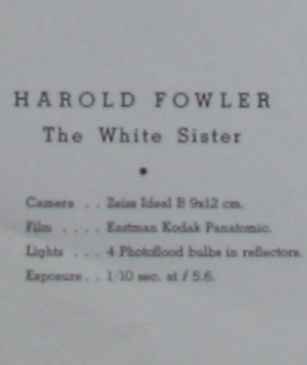1887 -1957 |
via email from Harold Giblin, 1-24-2005 There follows my current notes on this remarkable man:" Harold Fowler (later Colonel, USAAC, CMG, DSO, DSM (USA), etc) Born in Liverpool, England in 1887, his family moved to New York, whilst he was still a schoolboy. After graduating from Columbia University in 1908, he became a partner in the New York Stock Exchange firm of White, Weld and Company. In 1913, he was invited by the then US Ambassador to Great Britain, Walter Hines Page, to become his secretary. When the war came in August 1914, Fowler made strenuous attempts to be accepted into the British Army. Eventually, thanks to a recommendation from the General Officer commanding the London District, he was accepted and gazetted Second Lieutenant to the Royal Field Artillery on 3 February 1915, and served with the Gunners on the Western Front in the same year, thus earning a 1914/15 Star. Promotion to Lieutenant came on 1 January 1916. Seconded to the RFC, he trained as an observer, eventually being confirmed and gazetted Flying Officer (Observer) on 19 April 1916. He next trained as a pilot, qualifying for his full ‘Wings’ on 28 July following. Posted out to 2 Squadron in France on 24 January 1917, he was quickly promoted to T/Captain on 22 February following. Transferring as a Flight Commander to 12 Squadron (BE2c’s) soon after this, Fowler and his observer, Lieutenant F E Brown, Royal Dublin Fusiliers attached RFC, were credited with sending a Halberstadt Scout down in flames on 25 February 1917. On 2 April 1917, the same pair in BE2c, ‘2521', were engaged in combat during an Artillery Observation Patrol over Cité Calonne, by an Albatros. Following a series of prolonged exchanges, the fight petered out when the German machine broke off and turned for home. Having survived through ‘Bloody April’ and beyond, Fowler was able to returned to the Home Establishment on 11 June 1917. His MC was announced in the London Gazette of 18 July 1917: 'For conspicuous gallantry and devotion to duty. He has done invaluable service in co-operating with the artillery. On one occasion he descended to 300 feet, and turned our guns on to parties of hostile troops. During the advance he was able to furnish much valuable information.' As the USA had entered the conflict on 6 April 1917, Fowler was allowed to resign his commission, with the rank of Honorary Lieutenant, on 16 June following. His combat experience invaluable to the USAS, he was gladly accepted into the American Army. During his service with the USAS, he was wounded, and decorated with the Distinguished Service Medal. For his subsequent work as a liaison officer between the USAS and the RAF, he was created Companion to the Distinguished Service Order (DSO) and Commander of the Order of St Michael and St George (CMG), by the British. (His 1914/15 Star, British War Medal and Allied Victory Medal were, according to a note at the Public Records Office, delivered to him in 1929). He was also decorated by the French and the Belgians. Following the Armistice, he became the Commanding Colonel of the US Third Army Air Service. After the war, Fowler returned to his Stock Exchange interests in New York city. A horseman of some repute, he entered as a Gentleman rider and rode his own horse, Pop Ahead, in the Grand National steeplechase at Aintree in the city of his birth, in 1927. At 40 to 1, he was not given much chance of success by the pundits, who, in the event, proved correct as his horse fell and failed to complete the most exacting course in world steeplechasing. He tried again in the following year, this time with Scotch Eagle, one of forty-two starters, but rated as an outsider at 100 to 1. The 1928 Grand National, run over heavy ground and in a mist, was one of the most eventful in the race’s long and distinguished history. Many horses, including Scotch Eagle, fell at the treacherous Canal Turn, and the race was eventually won by another 100 to 1 shot, Tipperary Tim. As well as a steeplechase riding, Fowler enjoyed big game hunting in Africa and in Alaska. Fowler was a close friend of Fiorello H La Guardia, a famous Mayor of New York city. In fact, Fowler led the political Fusion movement which was largely instrumental in securing the election of La Guardia in 1933, and again in 1937. Fowler himself was the First Deputy Police Commissioner in NYC from 1934 until 1937. In that post he had responsibilities for the city traffic, and during his tenure crusaded successfully for a reduction in traffic accidents, injuries and deaths. He also headed the Honor Board, which was responsible for decorating heroic New York policemen. An active member of the American Legion, he was commander of Air Service Post 501, in 1939 and 1940. In 1941, Fowler crossed the Atlantic to serve as a volunteer personnel officer for American citizens in the Royal Canadian Air Force in Great Britain. In 1942, he was given the honorary rank of Group Captain, RCAF, and served on the Staff of the commander of the RCAF in the UK. Later that same year, he became a US Army Air Force colonel and was appointed to serve on the operational staff of Major General James E Chaney in London. In the following year he was appointed Air Attaché of the US Embassy in London. Returning to his business interests in New York after the war, he lived, in the 1950's, with his wife, Thyrza Benson Flagg Fowler, in his Southampton, Long Island, home during the summer, and at his Palm Beach, Florida, home in the winter months. Colonel Harold Fowler died in a hospital in Palm Beach, Florida, on 17 January 1957, at the age of seventy. Editor's Note: I recently, (1-24-2007), received the sad news from Hal's wife that he had passed away on May 20, 2005. She wrote the following: " As for the book, Hal had just about finished writing up and checking all the biographies, and had arranged for publication, so I passed all the discs, photos and material on to Norman Franks, who was co-authoring. They have been in the publisher's hands for almost nine-twelve months now, but sadly the publisher (Diana Birch of Savannah Publications) has had a traumatic year herself, and is only now hopefully on the road to recovery. I spoke to her recently and she is hoping to finish her radiotherapy treatment any day now and is looking forward to working on the book, so perhaps one day soon it will be published! Hal spent the last three years of his life working at it, morning, noon and night, so I do hope so! Hopefully, when Diana is well enough, the book will be published as a final tribute to Hal as well as the poor MC winners that he wrote of. I'll try to remember to tell you when,and if, it is finally available! For every sort of reason let's hope and pray that Diana makes a full recovery. " As soon as the book becomes available, I will announce it on this page. 1-25-07 |
Contributed by Denise Tanaka, 6-15-11 Blanca de Saulles knew Harold Fowler. She spent time with him in England, while on a temporary separation from her husband in the summer and fall of 1914. She was on the same ship, the Lusitania, that returned to New York on December 23, 1914. (see the Ellis Island website) She and Harold are on the same sheet of the passenger manifest, just a few rows away from each other. One of Blanca's personal letters to her husband - who was himself traveling in France on business - mentions that she spent New Years Eve Dec. 31, 1914 with Harold Fowler in the group. From your website I learned that Harold returned to England in February 1915 and served in the war. He returned to the U.S. in July 1917 (again, from the Ellis Island website) just 11 days before Blanca shot her ex-husband. If you know anything more about this connection, please let me know. |
 |
 |
via email from Chuck Manning, 10-9-08 Editor's Note: If you can help us to identify the painter of this picture, perhaps to confirm that it was Harold Fowler, the aviator, we would be very grateful. Please contact me by email. |
|
Enlisting in the British Royal Flying Corps before the United States entered World War I, he won the British Distinguished Service Order and was made a Companion of St. Michael and St. George. He transferred to the American Air Service when the United States entered the war and won the American Distinguished Service Medal and was also decorated by both France and Belgium. He served for four years as first deputy police commissioner in charge of traffic in New York CIty. In summing up the many roles he played in life, a Southampton newspaper said he was a banker, fox hunter, big game humter, steeplechase rider, explorer and war aviator. He was a member of many organizations, and his interest in aviation continued to the end. |
On the Find A Grave Website Information from Pete Jones, 11-2-08 |
If you have any information on this Early Bird, please contact me. E-mail to Ralph Cooper 

|